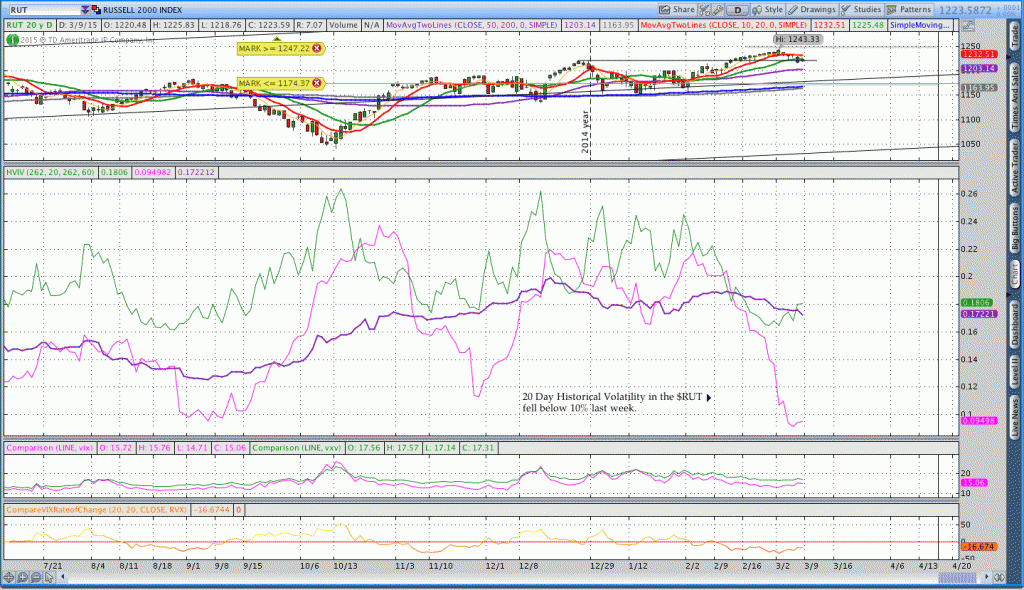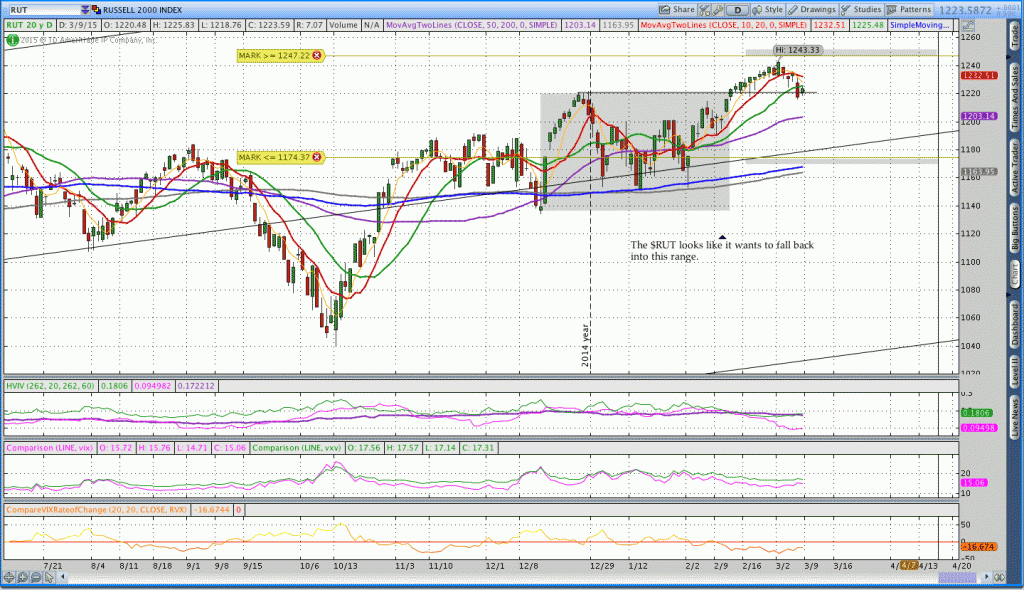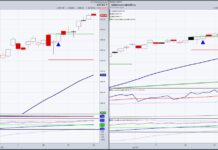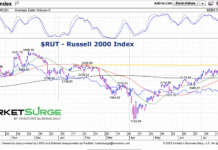Around this time last week, the Russell 2000 and the S&P 500 were near all time highs and looked like they might push even higher. However, as I noted in “Volatility Might Be Flashing A Warning Sign For Stocks“, I had some concerns about the strength of the stock market as it made new highs. Even though volatility isn’t a predictor of price direction, it does exhibit some patterns that are worth considering.
One of the most important observations about Historical and Implied Volatility is that they rise and fall, but also revert to a longer term mean. We know that periods of low Historical Volatility (HV) will tend to be followed by an increase in HV. While that doesn’t always suggest lower prices, stocks are generally more volatile when they decline in price. Over the weekend in my Weekly Market Commentary, I mentioned that 20 day Historical Volatility in the Russell 2000 had collapsed to less than 10%. That is an extremely low level for the Russell and suggests, if nothing else, that volatility should increase. The image below has an expanded volatility panel that shows 20 day HV (pink), 60 day HV (purple), and Implied Volatility (green) for the Russell 2000 (RUT).
In the Volatility chart above, we can see that all three types of volatility have been declining in the RUT over the past few weeks. However, the big drop in 20 day Historical Volatility suggests that things have gotten a little too quiet. As a result, it’s reasonable to expect an increase in daily price swings, but it seems a little premature to get overly bearish on the stock market.
In the price chart below we can see that the Russell 2000 looks like it’s ready to fall back into the 3 month range it just left.
Even through price seems to want to trade lower and we’re expecting an increase in daily price swings that will translate into higher Historical Volatility, price is still in a primary uptrend. We’re seeing some short term weakness in price with RUT trading below the 5, 10, and 20 day moving averages, but the longer term 50, 100, and 200 day moving averages are bullishly arranged and upward sloping. The conflicting signals we’re seeing in price and volatility suggest more range bound price action with larger daily swings as the market tries to find direction. From a neutral to bearish options traders standpoint, the market should provide some good opportunities as long as we don’t see a sharp increase in 20 day Historical Volatility. The next warning sign for options traders will be when 20 day HV trades back above 60 day HV. Until then, slightly short Delta / positive Theta positions should work nicely. Thanks for reading.
Follow Dan on Twitter: @ThetaTrend
Author holds positions in RUT, IWM, and SPY at the time of publication. Any opinions expressed herein are solely those of the author, and do not in any way represent the views or opinions of any other person or entity.










